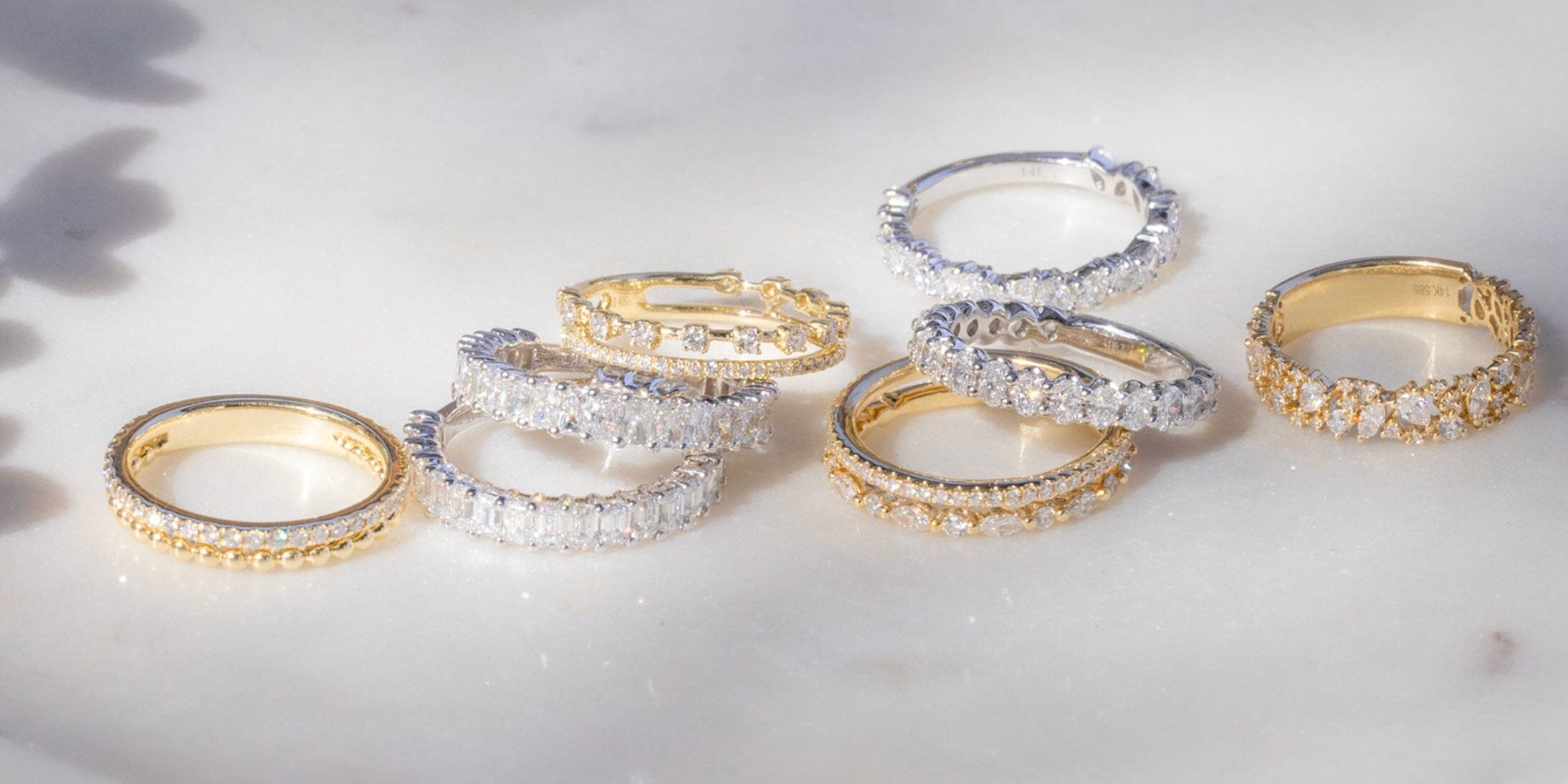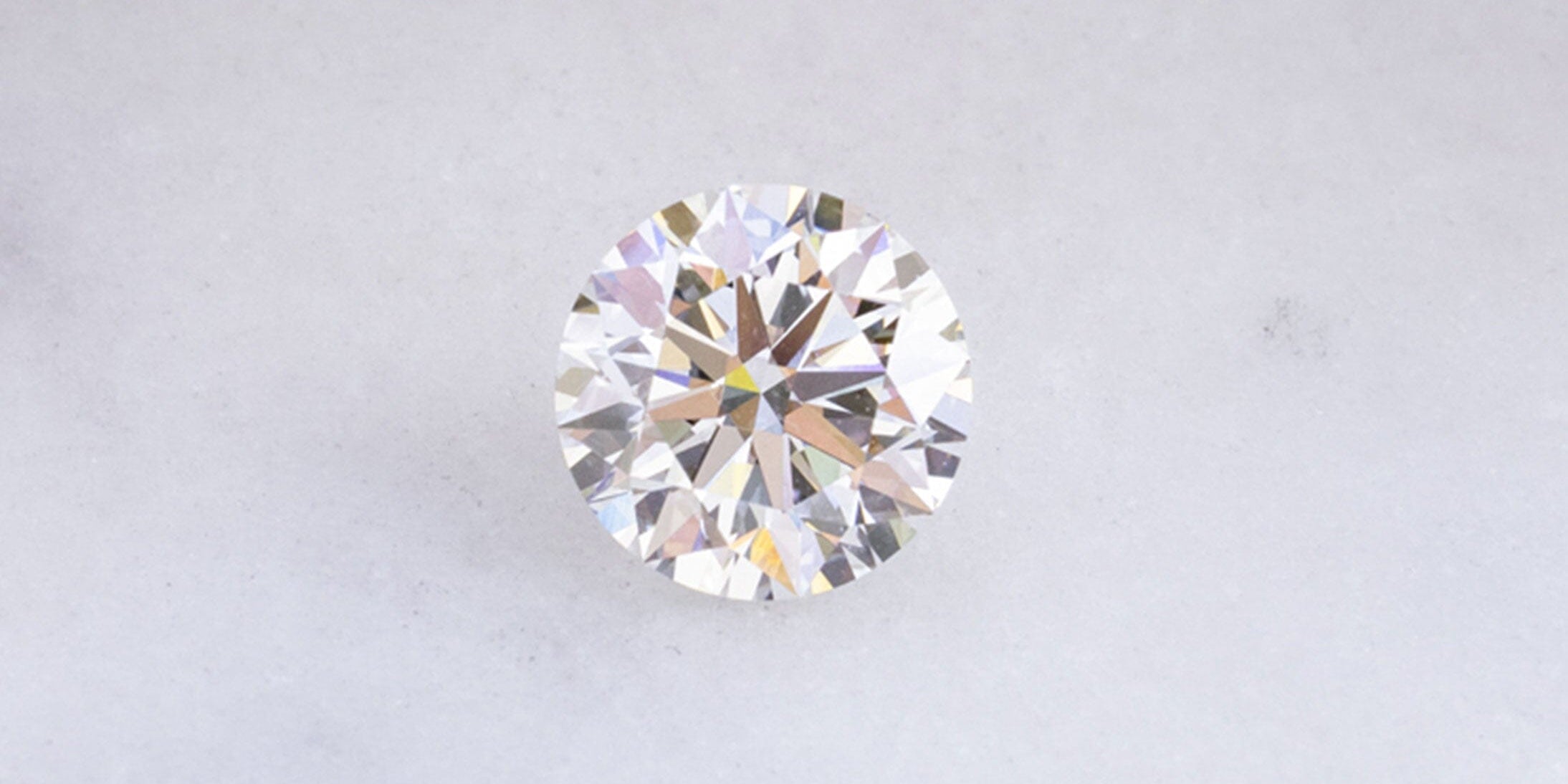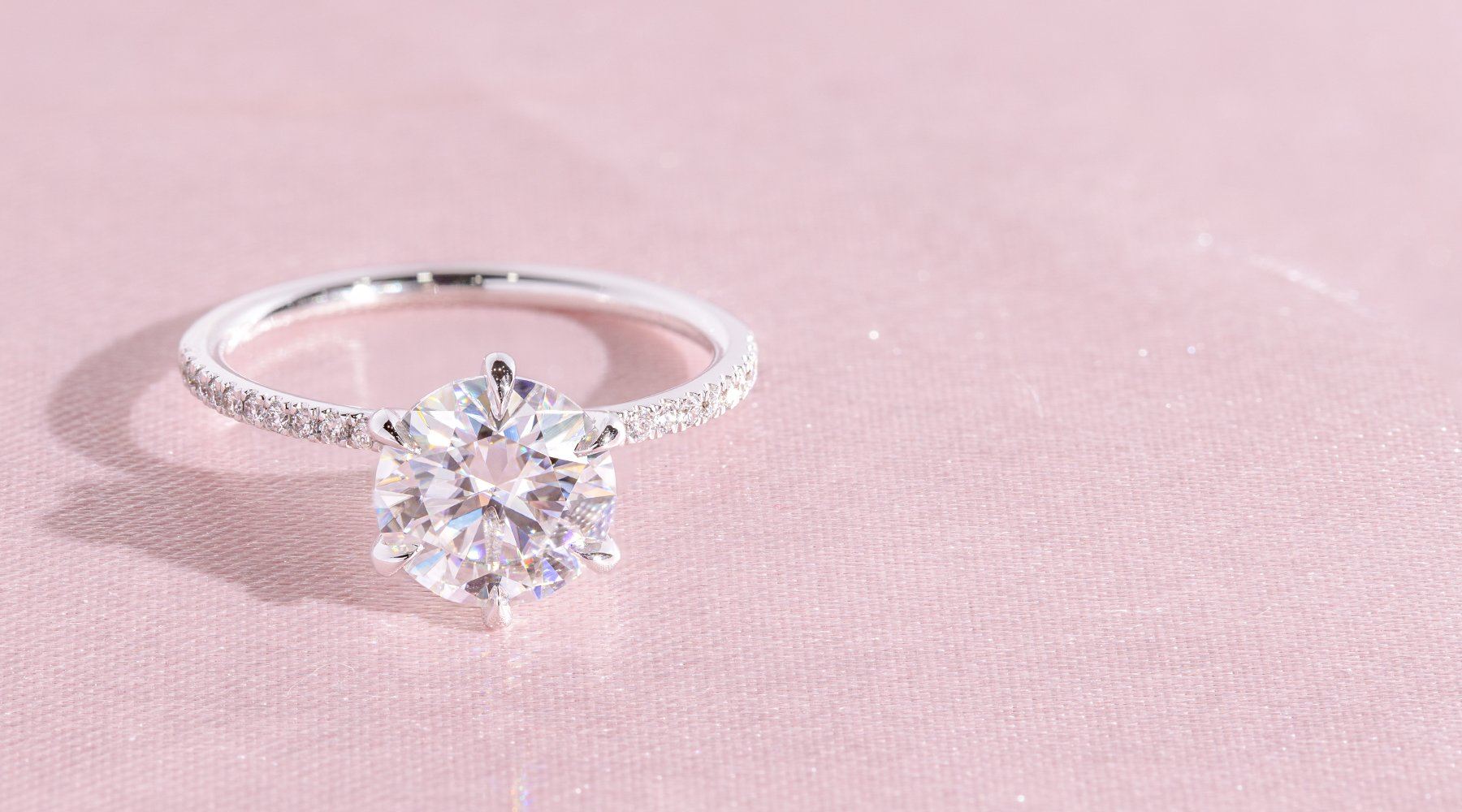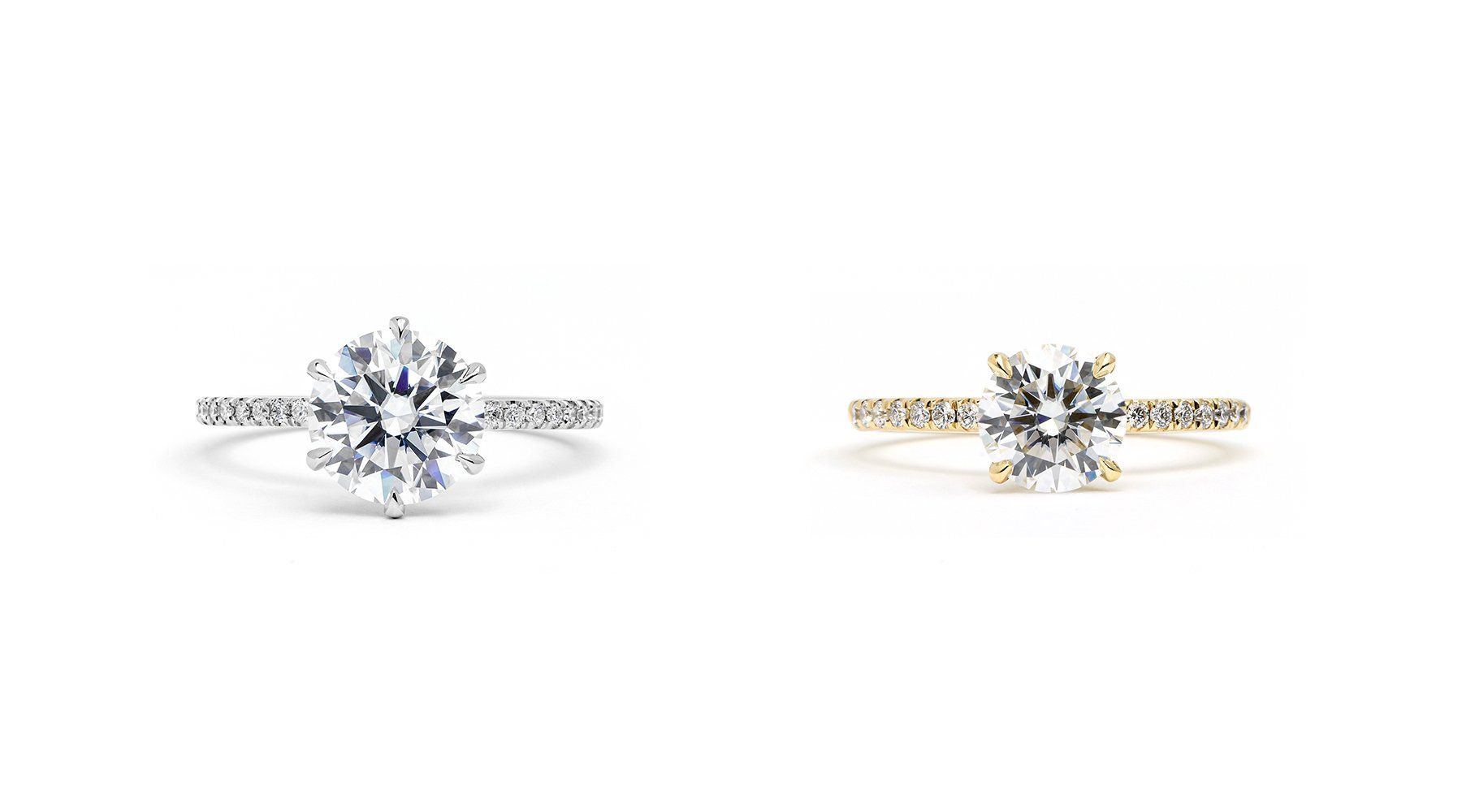What are the main differences between lab-grown and natural diamonds?
The main differences between lab-grown and natural diamonds are the place of origin and the price. Natural diamonds are created within the Earth's mantle millions of years ago due to extreme heat and pressure. Lab-grown diamonds are made within months inside a chamber that can re-create the same conditions as the Earth's mantle.
Price is where there is the most apparent difference. Lab-grown diamonds are typically 50-90% less than an equivalent quality natural diamond. The price disparity will increase exponentially for diamonds at higher carat weights.
In most cases, you can also get a lot more for your money with a lab-grown diamond as well as a higher quality stone.
Below is a chart comparing lab-grown diamond and natural diamond prices.

Here are another two diamond charts to compare. Below are more frequently requested carat sizes, colors, and clarities at our store. The top table is for commonly asked for natural diamond options, and the bottom one is for lab diamond options.


What are the similarities between lab-grown and natural diamonds?
Visually, optically, and physically, both options are identical. The only way to tell the difference between the two is by checking the laser inscription on the stone to see what the certificate number is. You can then search for the certificate number on GIA, IGI, or GCAL's respective websites to see if the diamond is natural or made in a lab.
If there is no certificate number engraved onto the diamond, then you would need to visit a jeweler to help test the diamond for you or submit the diamond to GIA, IGI, or GCAL.
Are lab diamonds real diamonds?
Yes. Lab diamonds are real diamonds; they are just made in a lab. They have the same chemical composition as natural diamonds being 100% carbon.
Are lab-grown diamonds the same as moissanite or cubic zirconia?
No. Diamonds, moissanite, and cubic zirconia are each distinct individual stones with different chemical compositions. Lab-grown diamonds are pure carbon, moissanites are silicone-carbide, and cubic zirconias are zirconium dioxide.
Do lab-diamonds hold any re-sale value like natural diamonds do?
Yes. You can re-sell lab-grown diamonds. While the market for lab-grown diamonds isn’t as old as earth mined diamonds, the demand for lab is growing rapidly. The best way to sell lab-grown diamonds is to third parties or directly to individuals where lab-grown diamonds are in high demand. While you won’t get 100% of your money back, you will get significantly more than the small amount some retailers would offer.
Whether the diamond is lab-grown or natural, the value retainment depends on the supply and demand from consumers. Buying a diamond engagement ring with a lab-grown or natural diamond should be considered a discretionary, luxury purchase, and not an investment. The diamonds used in engagement rings are historically not a good place to invest your money. You should treat your lab or natural diamond engagement ring for what it is. A beautiful piece of wearable art and representation of your love that will last forever.


















Excellent article!! It was fascinating to read about the differences between lab-grown diamonds and ethical diamonds. Thank you for spreading the word about the article. It was beneficial.